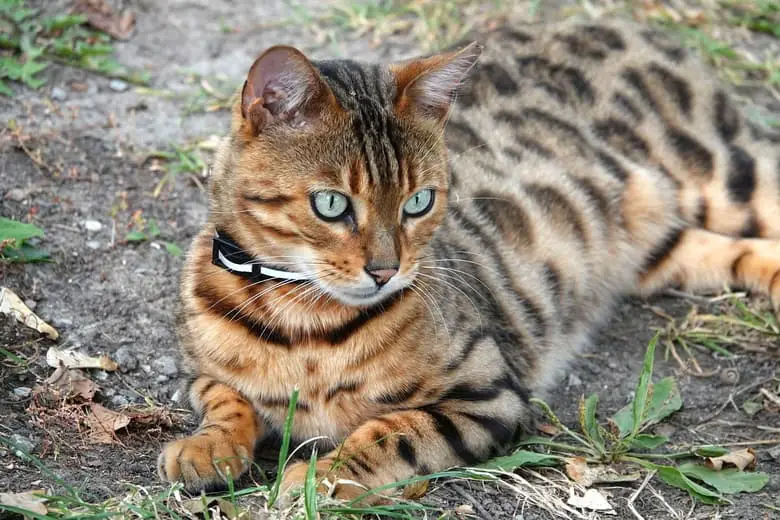When we think of animals that can swim, rarely do we think of domestic cats paddling their way across a pond or diving beneath the surface of a pool. On the contrary, we often think of cats as being averse (almost allergic) to water, particularly when it comes to bathing. However, there are several breeds of cats that can swim, and even enjoy doing so.
This list is composed of those breeds known for their ability in, and affinity for, water, and that also happen to make great pets.
The 12 Types of Cats That Can Swim
As you’ll find, the breeds on this list are diverse in look, size, and temperament, showing that the appearance of a breed is not always a good indicator of whether that breed is equipped for swimming.
1. Maine Coon
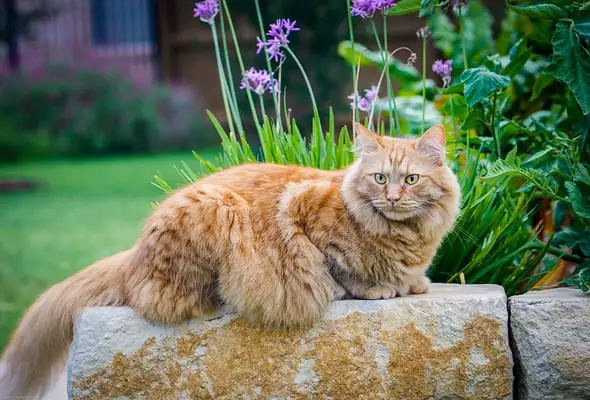
Average Lifespan: 13-14 years
Average Size: 13-18 pounds
Coat: long, dense
One of the largest breeds of cat, the Maine Coon is a long bodied and densely muscled cat hailing from (you guessed it) the state of Maine.
Maine coons are known for their striking, long fur, which accentuates their already large size. Developed on farms to control rodent populations, this breed is known to be an excellent hunter that is well adapted to outside conditions due to its long coat.
While the Maine Coon is still used today as a mouser, this breed also makes a terrific household and family companion, with many owners commenting on its affectionate nature. The breed is not only adept at swimming, it is also known to actively enjoy going for a dip and appreciates the exercise.
2. Turkish Van
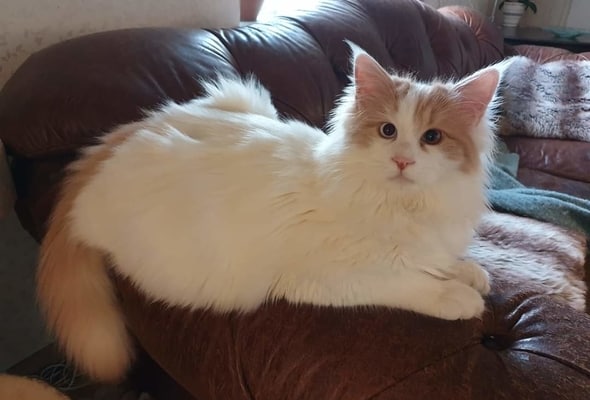
Average Lifespan: 12-17 years
Average Size: 10-20 pounds
Coat: semi-long (seasonally dependent)
Another large breed of cat, the Turkish Van, as the name suggests, originates from Turkey, where it was bred and used as a companion animal and mouser.
An old breed, depictions of cats resembling the Turkish Van appear in Turkish art stretching back four thousand years. While these ancient felines are likely not identical to the Turkish vans we have today, modern Turkish vans are thought to be their descendants.
This breed is known for being well adapted to outdoor living, which is what may have necessitated its ability to swim. Famous for their swimming prowess, Turkish Vans eagerly take to the water.
3. Savannah Cat
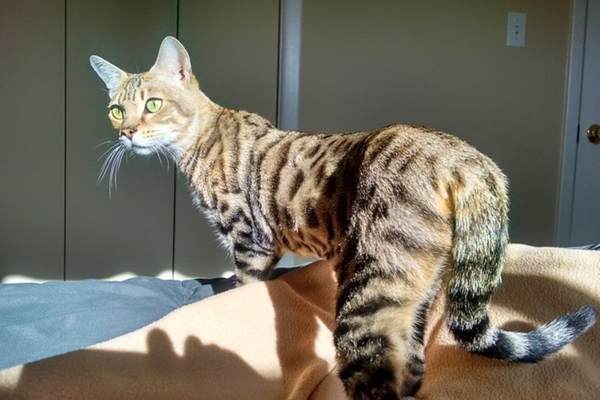
Average Lifespan: 15-20 years
Average Size: 12-25 pounds
Coat: short, fine
The Savannah cat is a fairly recent breed that was developed from crossing domesticated cat breeds with wild African servals in order to produce an indoor cat that bears the appearance of its undomesticated counterpart.
Likely due to its wild parentage, this breed is known for being incredibly active, and therefore requires a larger space and regular exercise. Because of these requirements, and of the cats that can swim, this breed should only be kept by those with plenty of experience.
The Savannah cat may owe its proclivity for the water to its Serval ancestry, as wild cat species will often hunt and escape predation by taking to a stream or pond.
4. Bengal Cat

Average Lifespan: 12-16 years
Average Size: 10-15 pounds
Coat: short, fine
Another of the breeds on this list with wild parentage, the Bengal cat is a hybrid cat breed originally developed by crossing an Asian Leopard cat and an Egyptian Mau. Asian leopard cats are a wild species of small cat that can be found across Asia.
As can be seen above, the Bengal cat’s coat possesses a striking pattern of elongated black spots, which give it a wild look. Like other breeds that have been crossed with wild cat species, this breed has greater exercise requirements, and has likely inherited its affinity for the water from its wilder cousins.
5. Turkish Angora
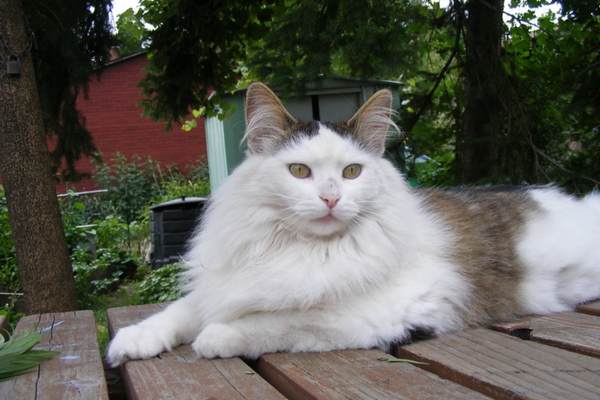
Average Lifespan: 12-18 years
Average Size: 5-10 pounds
Coat: long
The Turkish Angora is an ancient breed of cat from greater Anatolia, where it was bred for its hardiness and prowess as a mouser.
Interestingly, the ancestors of the Turkish Angora were some of the earliest cats domesticated in the Fertile Crescent from the African wildcat, which is the original species from which most domesticated cats were bred.
Known for its silky fur and elongated body, the Turkish Angora is well suited to indoor and outdoor life, although it has more recently been bred for its companionable attributes. Related to the Turkish Van, this breed is also recognized as an adept swimmer and is comfortable around water.
6. Highlander Cat
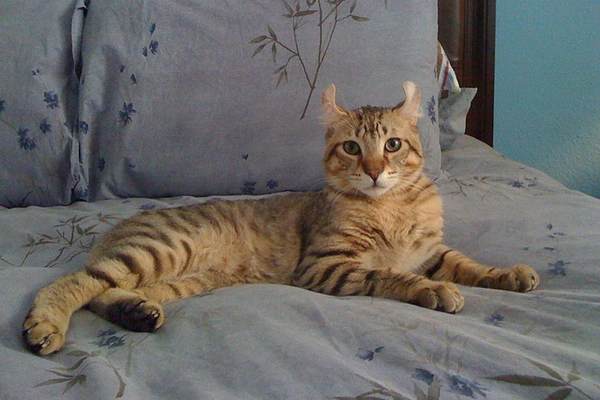
Average Lifespan: 13-16 years
Average Size: 10-14 pounds
Coat: short, fine
The Highlander Cat is perhaps one of the most unique looking cats that can swim on this list. With its short rounded ears and bobbed tail, the Highlander looks has been compared to bobcats in appearance.
An experimental and fairly recently developed breed, the Highlander is known for being particularly well suited to family life and for being open and playful, even in company. While individuals of this breed have been found to enjoy spending time in the water, it should not be assumed that all highlanders share this enjoyment of swimming.
7. American Bobtail
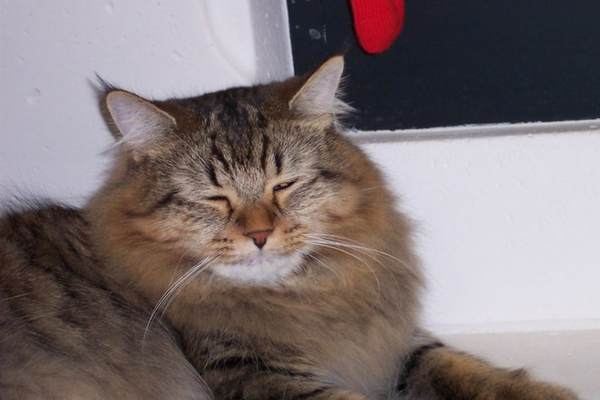
Average Lifespan: 13-18 years
Average Size: 7-16 pounds
Coat: medium to long
Like the Highlander, and as the American Bobtail’s name suggests, the American Bobtail possesses an almost nonexistent or severely truncated tail. Aside from the absence of a tail, these cats otherwise superficially resemble Maine Coons, albeit they appear slightly smaller.
A fairly uncommon and recent breed that was developed in the 1960s, the American Bobtail is known for being an intelligent and personable cat that is playful and displays affection towards its owners.
Also like the Highlander cat in its regard for swimming, American bobtails have been observed to enjoy and spend time in water, although it should not be assumed that all individuals are like this.
8. Egyptian Mau
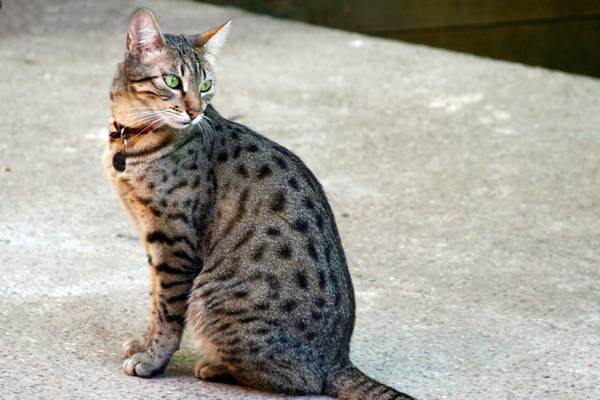
Average Lifespan: 9-13 years
Average Size: 8-12 pounds
Coat: short, fine
The Egyptian Mau is a bright-eyed and curious cat breed with a uniquely patterned coat. Although wild in appearance, this breed has been fully domesticated. Notably, the Egyptian Mau is considered the fastest cat breed. This is in part due to its disproportionately long hind legs, which can propel the animal at astonishing speeds.
When it comes to water, many individuals of this breed have been known to jump right in and have been observed to swim with confidence. A great way to exercise Egyptian Maus, offering your cat a sufficiently large source of water to swim in is one way to reward your animal’s good behavior.
9. Siberian Cat
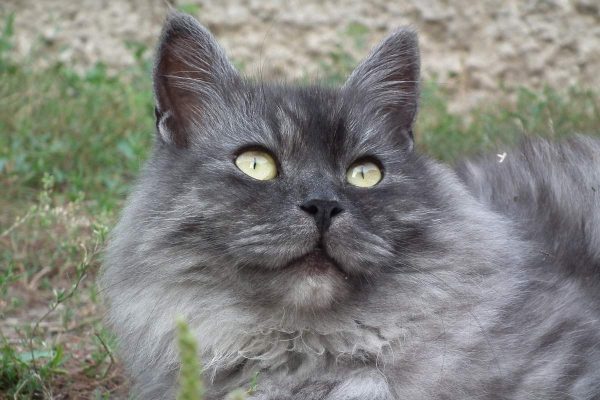
Average Lifespan: 12-15 years
Average Size: 10-20 pounds
Coat: long, dense
The Siberian Cat is an ancient landrace breed originating from Russia. Its long coat and solid frame make it well suited to outdoor life, and it has historically been used as a mouser in cooler climates.
Interestingly, researchers believe the Siberian Cat is the ancestor of all other long-haired breeds. The breed itself is strong and resilient and can be quite independent, although many people find the Siberian Cat to also make a great household companion.
Like other breeds that are equipped to live in outdoor conditions, the Siberian cat is a proficient swimmer and some individuals have been observed to enjoy some amount of aquatic activity.
10. Norwegian Forest Cat
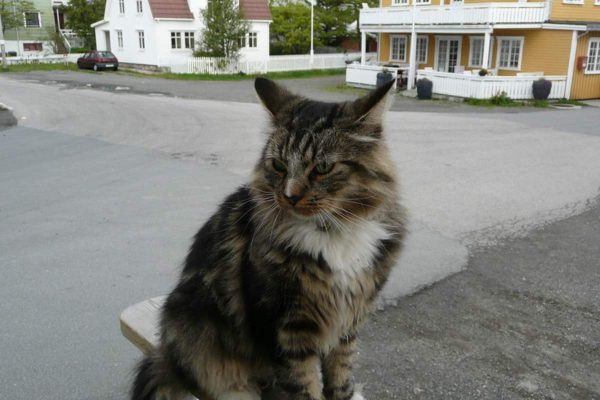
Average Lifespan: 12-20 years
Average Size: 12-16 pounds
Coat: long, fluffy
As the name suggests, the Norwegian Forest Cat originates from Northern Europe, where it is well equipped to handle harsh winters and an indoor-outdoor lifestyle. This breed bears a royal buff of fur around its nape and head which superficially resembles a lion’s mane, although the breed does not otherwise appear leonine.
Also like others on this list, in part due to its historically outdoor lifestyle, the Norwegian Forest Cat is capable of, and comfortable with, swimming.
11. Abyssinian
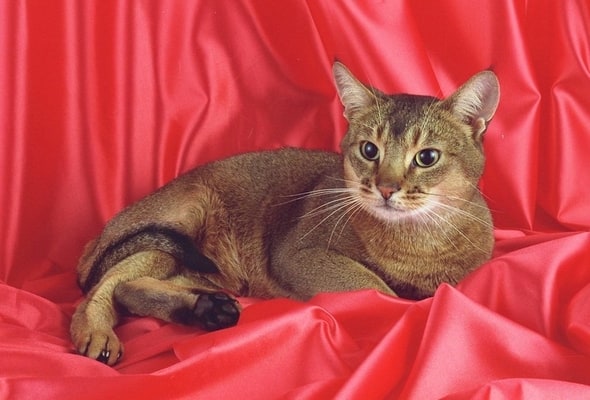
Average Lifespan: 9-15 years
Average Size: 9-17 years
Coat: short
Originally from Ethiopia, the Abyssinian is a short-haired cat that has been bred and developed as a companion breed. Due to the Abyssinian’s color and body shape, the breed has drawn comparisons with cougars, although the cat has no relation.
This breed is known for being athletic and playful. Its curious intelligence makes it an entertaining breed to observe and interact with, and it is found to be a particularly active breed.
Like most of the other cats that can swim on this list, the Abyssinian has a particular affinity towards water, and has been observed playing with faucets and fountains, in addition to swimming.
12. Kurilian Bobtail
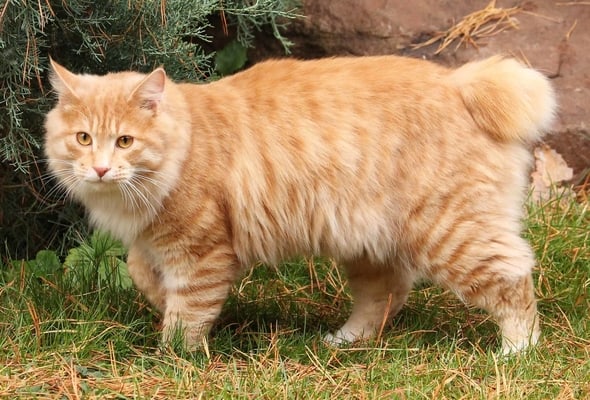
Average Lifespan: 15-20 years
Average Size: 8-15 pounds
Coat: medium to long
The third bobtail breed on this list, the Kurilian Bobtail is a breed originally developed in Russia and is tolerant of cool weather, owing in part to its thick coat. Stocky and muscular, the Kurilian Bobtail is known for its hunting prowess, and has even been observed to fish in shallow bodies of water. This makes it a suitable and efficient mouser.
As alluded to, the Kurilian Bobtail not only can swim and tolerate water, it also seeks out and takes pleasure in interacting with flowing water and shallow pools. A cute and distinctive breed, the Kurilian Bobtail also happens to be quite rare outside of Russia and Japan.

